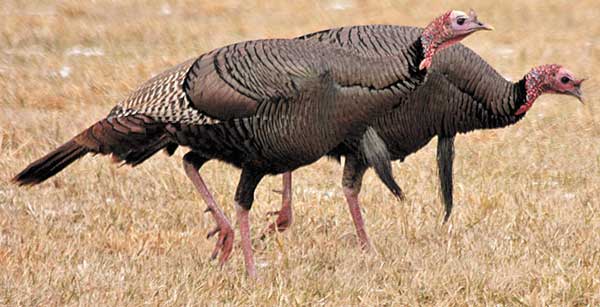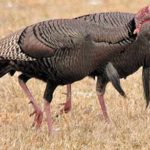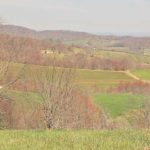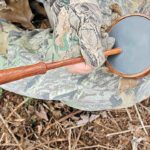
Counties along the Tennessee and Virginia state lines are turkey hotspots for North Carolina hunters.
From hunting in Alleghany County a number of times, I had a fairly good idea where the gobbler might be in the pasture that lay level with the ridge above me. Nearing the mountaintop, I pulled out a crow call and sent forth several coarse caws.
The gobble that came back shocked me in its intensity. The good news was that the turkey was just a few yards past the crest; the bad news was that only two small trees grew between him and me.
I realized I had committed a terrible turkey hunting sin — calling before having a plan in place in case a tom responded. I backtracked and set up against a tree, hoping that when the old boy did appear, I could shoulder my 12- gauge when his head disappeared behind one of the two small trees.
Knowing I couldn’t move because the terrain was too steep — and barren of vegetation — I uttered a few soft yelps. This time, the longbeard double-gobbled, and seconds later, he was standing 20 yards away, staring toward the twin trees and the blob — me — sitting against the third one.
His decision was immediate; the tom began making long strides in the direction of the opposite woods. Shouldering my shotgun, I watched as the turkey went from striding to running to flying across the pasture, sailing deep into the hollow on the opposite side.
Walking into the mountaintop pasture, I couldn’t help but be inspired by the view, which included a small tributary of the New River winding its way down the mountain and sycamores and sugar maples just starting to leaf out.
The landowner’s cows were spread out across the mountainside, which stretched 500 yards to a 2-lane road running along the perimeter of the property. Across the valley, lay another farm, this one a Christmas tree concern. And to my right, a grove of white pines dotted the mountainside — a likely a roosting spot. To my left, another farmer’s cows fed on the lush growth of his pasture. A cobalt blue sky and crisp wind — it’s almost always windy in the northwestern mountains in April — completed the picturesque scene.
As much as I relish pursuing Alleghany County’s gobblers, I have to admit that both similar vistas and badly-behaved birds can be found in other counties along North Carolina’s borders with southwest Virginia and northeast Tennessee. Ashe, Watauga, Avery, Mitchell, and Yancey counties all offer quality turkey hunting for sportsmen who prefer their toms upland style.
For years, Alleghany and Ashe counties were among the overall leaders in North Carolina’s statewide spring-gobbler season harvest, swapping second- and third-place back and forth behind Caswell County, with annual harvests in the neighborhood of 200 turkeys — between one and two per square mile. As flocks have increased across the state, the harvests have gone up in counties that cover greater areas, relegating Ashe and Alleghany to lower echelons. But that doesn’t mean the hunting isn’t just as good as ever.
Bob Bamberg, the executive director of the Alleghany County Chamber of Commerce, is eager to tout the charms of his county, as well as those of the other border domains.
“One of the things that I find most stunning, especially in the spring, is when I crest a peak in Alleghany and witness how little development there is,” Bamberg said. “Of course, there’s been some development, but mostly what I see is a panorama of agricultural, cattle, and Christmas tree farms.
“Particularly in the spring, the predominant color in our mountains is a lime green, almost chartreuse, that seems to overwhelm every other color,” he said. “Of course, don’t be surprised that sometimes in early April, little skiffs of snow will turn that green white. But most likely what will happen when the weather turns cold is an icy rain with the air temperature in the high 30s. Then that cold air blows out, and the next day it’s very pleasant again.”
Joe McCausland works at S&L Outdoor Sports Supply in Sparta, a turkey-hunting mecca for hunters in Alleghany and Ashe counties. He agrees with Bamberg on the vagaries of early-season weather and suggests that turkey hunters visiting the high country be prepared for extreme weather changes.
“This past spring during opening week, the temperature varied over 30 degrees from the 30s to the 60s, from the days being very pleasant to being very windy and cold,” McCausland said. “Hunters coming to the mountains for the first time should know to bring along plenty of underwear and dress in layers.”






Be the first to comment